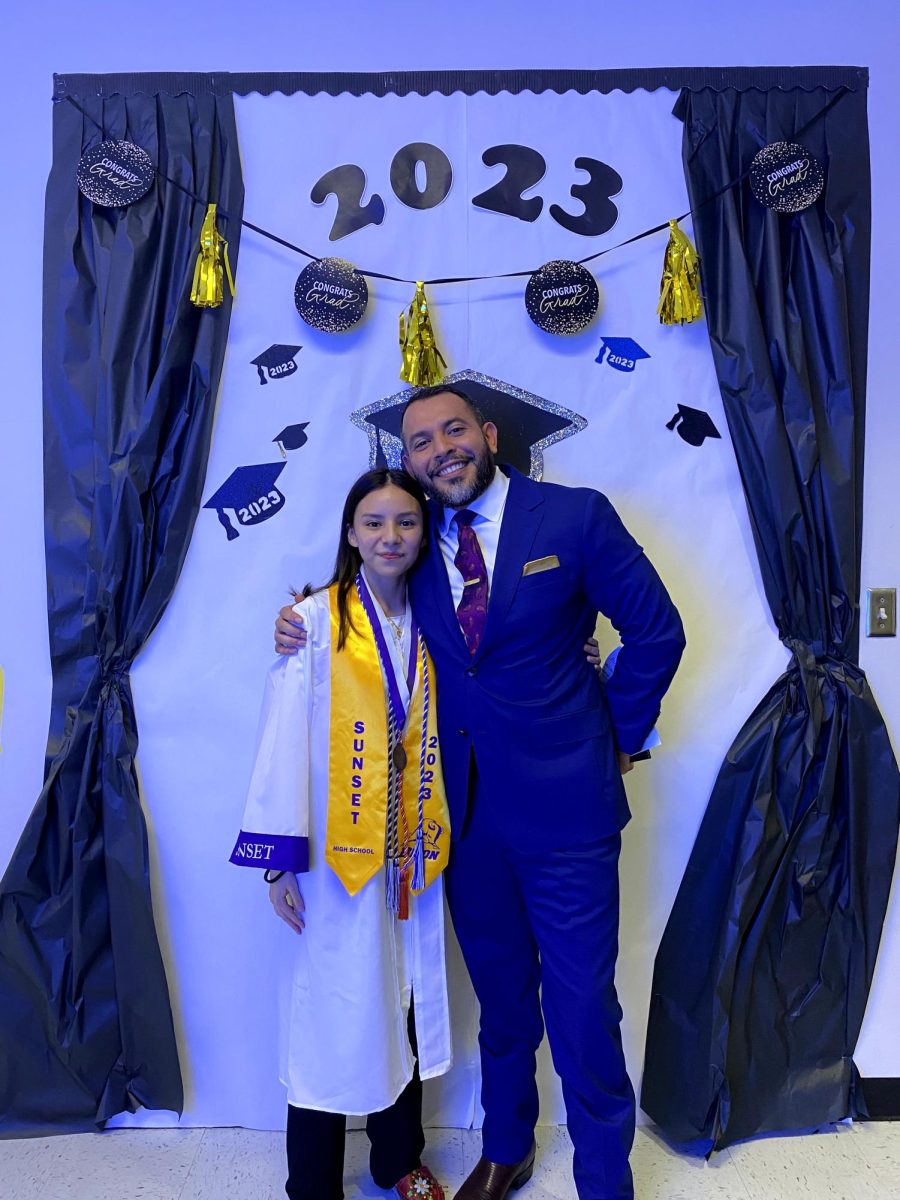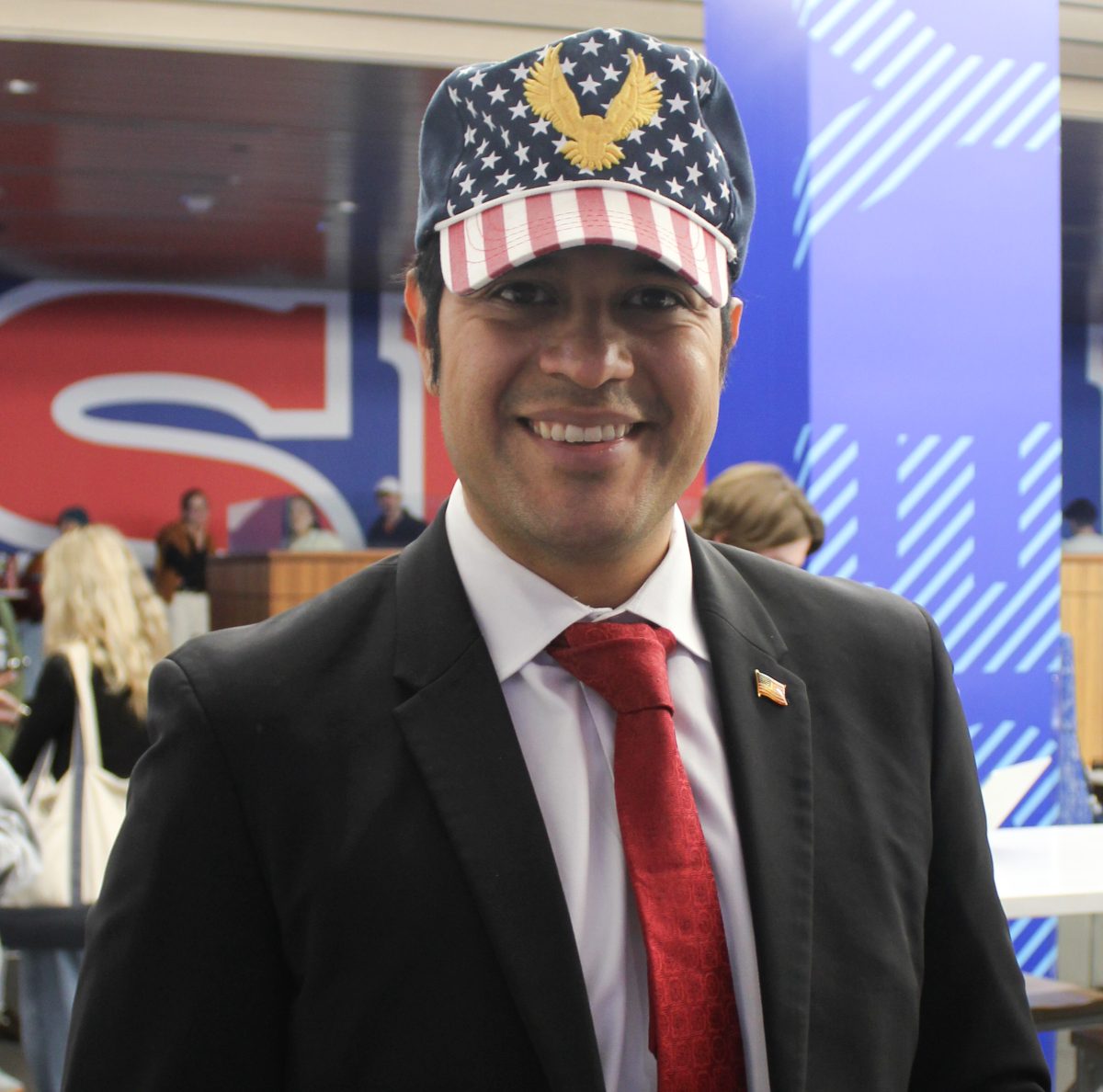
KPNI station manager Amrita Vir works in the studio located in Umphrey-Lee. (Spencer J Eggers/ The Daily Campus)
Tucked in the back of the Umphrey Lee building sits a small room filled with microphones, speakers and hundreds of CDs from alternative artists.
Once the proud voice of the university, KPNI, SMU’s student radio station, seems to have become a forgotten relic of the past.
KPNI’s website sums up their predicament best. It reads: “We’re a college radio. That is broken.”
KPNI is not alone. College radio stations across the country have been cut or downsized, the victims of budget cuts, administrations and a technological music revolution that has rendered traditional radio inadequate.
SMU’s radio station launched in 1947. After a series of incidents with the Federal Communications Commission (FCC), the station was relegated to broadcasting on-campus only. The sounds of KPNI used to be heard across the dorms and, for a short time, in the Umphrey Lee Cafeteria.
In 2007, KPNI became an online-only station.
“I joined KPNI as a freshman, and I thought it was the coolest thing in the world,” Amrita Vir, KPNI’s station manager, said. “But no one else knew it existed. It’s hard to be the voice of SMU when SMU doesn’t know who we are.”
When Vir took over the station as a sophomore, the station was already in a state of decline.
The station has a small operating budget, around $200 per semester, leaving no money for equipment replacement or repair.
“We’re kind of in this no man’s land,” Vir said. “And there is no money or manpower to fix it.”
In fact, KPNI has been unable to broadcast since August because of technological issues and broken equipment.
“In the mainstream, there is nothing new and exciting going on. It’s pretty tragic,” Vir said. “I think students miss the music exchange. Finding new music is exciting, but having no one to share it with is disheartening.”
KTRU, the student-run radio station at Rice University, also recently faced being silenced.
In April 2011, the FCC approved the controversial sale of the station’s FM license, knocking KTRU off the airwaves. The university’s administration sold the station for $9.5 million.
“I remember visiting the school and being taken to the radio station,” Joey Yang, the DJ director at KTRU, said. “The guy I was staying with told me, ‘You can play whatever you want, and all of Houston will hear.’ I just thought that was so cool. It [KTRU] was a big part of why I came to Rice.”
But instead of being broadcast to all of Houston through the FM dial, the radio station now lives online and on mobile apps only, much to Yang’s disappointment.
“In my opinion, it’s a little shortsighted to just say, ‘Well, online radio is the future,'” Yang said. “To me there is a loss of accountability without the FM dial. Anybody can podcast.”
Gregory Weston, the incoming president of College Broadcasters, Inc., has definitely noticed a decline in support for all of the college radio stations he represents nationwide.
Weston believes the economic downturn has played a major role. He says that grant money, which funds many university stations, took a huge hit in the recession.
“State support, government support are much lower than they used to be,” Weston said. “There is also just general declining support from the administration.”
But not all stations are struggling to survive. The University of Texas at Austin’s student-run station, KVRX, is alive and well — at least for now.
“Up to this point, we are not in any immediate danger, but every few years they [UT] reassess how much they give to us,”
Travis Bubenik, the station manager at KVRX, said. “We are continually having to justify ourselves and our existence to the university.”
Unlike the stations at SMU and at Rice, KVRX still plays on the FM dial. While they share the channel with another public broadcasting station, they provide an alternative voice on the airwaves for 12 hours a day.
However, Bubenik attributes the staying power of KVRX to its adaptability to new technology. The station has created an iPhone app and offers a lot of listener interaction on their website.
“It’s not something we take for granted,” Bubenik said. “It’s constantly in the forefront of our mind to try and stay relevant.”
Staying on the cutting edge of technology may be the only way to salvage the voices of universities across the country. Bubenik and the others involved with college radio recognize that the struggle to be heard will continue.
“In general, college radio is really a voice in the wilderness,” Weston said. “College radio is the best bastion for having alternative content that can’t always get a voice on commercial stations … I think it is more important now than ever.”








